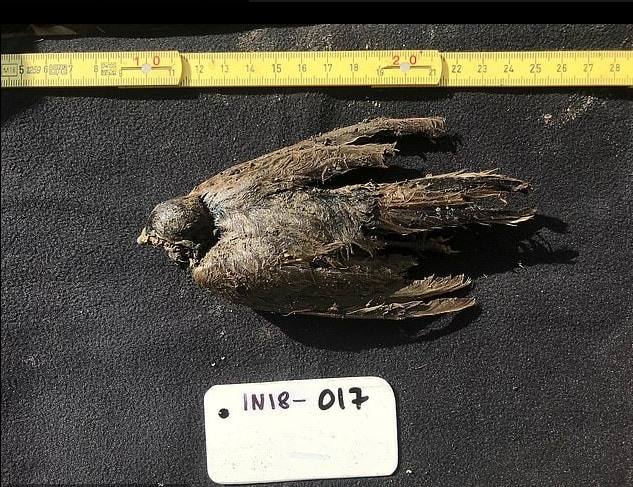
A preserved carcass of a bird in pristine condition was discovered in Siberia, the bird was dated back as far as 46,000 years and believed to be the ancient horned lark.
Preserved due to permafrost in the Belaya Gora vicinity of North-Eastern Siberia, it is giving concrete research for scientists to understand the evolution of larks as time passes by. This, in turn, can help identify and understand past climate events as well as future ones that can help scientists to find better ways of coping with our changing weather.
Read Also: World's Only 11-Foot PinkManta Ray Photographed at The Great Barrier Reef
How was this discovery found
The prehistoric bird was luckily discovered by local fossil ivory hunters. The bird was found about 150 lateral meters into the tunnels, it had a depth of roughly 7 meters deep. It was then passed on to a team of experts with the likes of Nicolas Dussex and Love Dalén. They hail from the Swedish Museum of Natural History, where this was tested.
How did they do it
The scientists used about 50 mg of the ancient horned lark's tissue for DNA extraction and genome sequencing, this confirmed a 100 percent match with the now horned lark. The origins of this bird came from the period of Pleistocene, this took place between 2.6 million to 11,700 years ago. Wild.
How does this relate to climate change
The authors had this to say: "Pleistocene tissue remains recovered from permafrost ... have the potential to become instrumental in better understanding processes such as biological regulation and gene expression in relation to past climate change,".
By studying the effects of the ancient horned lark, it's possible to know what climate it had been or had undergone before its frozen state. This, in turn, helps out scientists analyze the past events of climate change and compare it to our real-time climate and what global warming is doing to the globe.
What science did they use
The bird was radiocarbon-dated to approximately 44, 163 and 48,752 years. This is easier for scientists to test since it was a frozen carcass rather than one of just skeletal remains would give.
"For instance, molecular identification of the sex of animal remains ... allows for investigations into the behavioral ecology of extinct species," the journal article said. "[And] sequencing of mitochondrial or nuclear genomes can enable studies of temporal range shifts associated with past climatic fluctuations."
The quote is from the authors who are across the world. This includes the Swedish Museum of Natural History, Lund University, University of Michigan, Stockholm University, University of Maine, The Academy of Science of the Sakha Republic and the National History Museum in London.
This amazing discovery can help uncover the facts about the effects of climate change and what it does to bodies of living beings. It's only a matter of time before more discoveries will lead to scientific breakthroughs.
Read Also: What NASA's Juno Found Out Changes What We Know So Far About Jupiter's Water
ⓒ 2025 TECHTIMES.com All rights reserved. Do not reproduce without permission.




